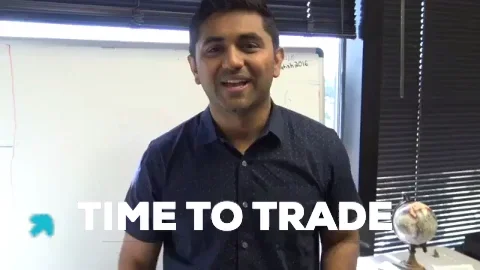Imagine this!
Your Aunt Jane gave you $100 for your birthday and you are thinking of investing the money in the stock market but you're not sure where to start.
I was in exact same situation a few years ago and it prompted me to begin learning about investing.

As someone, who started her investment journey in their early thirties, looking back, there are a few things I wish I'd known before taking the plunge.
1. Start early
I wish I had known just how powerful starting early could be. If I had started investing in my early twenties, my investment would have grown significantly more due to the magic of compounding.
 Photo by Sasun Bughdaryan on Unsplash
Photo by Sasun Bughdaryan on UnsplashLet me quickly explain what compounding is. If you start with, let's say, $500 and invest it in something that earns you extra money, like a savings account, you might earn $10 in the first year.
In the second year, you could potentially earn money not just on your initial $500 but also on the extra $10 you earned in the first year, so now you have $520.
This process continues year after year!
 Photo by Towfiqu barbhuiya on Unsplash
Photo by Towfiqu barbhuiya on UnsplashQuiz
What happens with your money with compounding growth?
2. Do your research
In my early experiences, I used to make investment choices based on recommendations from friends and what I saw on social media.
However, I've learned that it's wiser to invest in companies operating in industries you have a good grasp of. By taking the time to educate yourself about the company and industry trends, you can reduce the risk of encountering financial setbacks.
Quiz
Why is it advisable to invest in companies that operate in industries you have a decent understanding of?
3. Diversify your investments
 As a first time investor, I didn't have a full grasp of the concept of diversification. Initially, I invested heavily in one stock and when the value dropped I suffered significant losses.
As a first time investor, I didn't have a full grasp of the concept of diversification. Initially, I invested heavily in one stock and when the value dropped I suffered significant losses.
Diversification is a great way to reduce risk. By spreading your investment across several industries you're less likely to lose all your investment in case of a negative event.
Technology, pharmaceutical, manufacturing, and healthcare are some of the industries to consider when deciding where to park your money.
4. Stay patient and adapt
 I used to think that investing was a set-and-forget activity. However, that's not the case.
I used to think that investing was a set-and-forget activity. However, that's not the case.
Periodically, you should review your portfolio and adjust it to align with your changing financial goals and comfort level with taking chances.
Avoid making impulsive decisions and be patient during market fluctuations. The time you invested in the market is more important than investment timing.
Take Action
 Photo by Bermix Studio on Unsplash
Photo by Bermix Studio on UnsplashMaking smart investment decisions often comes with both success and learning experiences.
Just like I initially lost some of my investment and later recovered it, these experiences can provide valuable lessons that will ultimately make you a wiser and more resilient investor.
By following these steps, you'll not only learn how to make informed investment choices, but you'll also gain valuable experience that will help you build a financially secure future.
Your feedback matters to us.
This Byte helped me better understand the topic.

